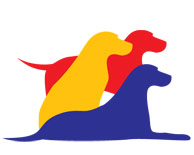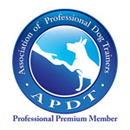Dogs chew. Puppies chew. People don’t like their furniture chewed. It’s a problem! The first question I ask the owners of problem chewers, “What do you WANT him to chew?” Dog owners often have lots of fluffy toys, but nothing that is appropriate for real chewing. Think about it. Dogs chew on furniture, on wood, on HARD things. If you are to provide an alternative, you must provide something equally hard.
When you are looking for chew toys, there is a definite line between puppy chew toys and adult dog chew toys. Each type of toy will feel very, very hard to you, but each is designed to be appropriate for either an adult dog or a puppy. There are many ways to define a puppy, but for chewing puppy is defined as a dog who has not lost all of their puppy teeth. Dogs begin to lose their puppy at about four months, and have lost them all by six months. When your puppy begins to do serious damage to his puppy chew toys, switch him to adult dog chew toys. Read chew toy packaging carefully to choose the correct toy for your pooch.
Edible chews are also available, and come in two varieties: man-made and nature-made. The man-made chews are generally eaten quickly. The cost of the man-made chew and the calories involved, combined with the speed of consumption, generally make these items a poor choice. Natural chews take longer for the dog to eat, and are not usually high calorie items. One exception would be pig ears. Pig ears are very high in fat – just touch one! They are often quite greasy. Cow, lamb and rabbit ears are also available, and are also lower in fat and calories. Bully sticks can also be excellent chews. Use caution when purchasing, as “fake” bully sticks are sold right next to real bully sticks. Fake bully sticks contain ingredients other than meat, and are eaten quickly. Rawhides can be good chew items, in moderation. Many types of bones are available. I prefer the ends – often sold as knuckle bones – as they are softer than the middle part of the bone. The large, long, hollow bones (the middle part) are very hard. It is possible they are harder than the dog’s teeth.
Dogs and puppies need to chew, some more than others. Anything you give your dog has the potential to do harm. Your dog might attempt to eat a piece that is too big, causing him to choke. Some dogs can swallow large pieces, only to have those pieces get stuck in the intestine. Know your dog’s chewing style, and watch him while he chews.
The first step to teaching your dog not to chew on your stuff is to teach him to chew on his stuff. Provide your dog appropriate chew toys and watch him enjoy himself.
Happy training!
Tricia Fagan
Certified Professional Dog Trainer – Knowledge Assessed
DogS Gone Good
trainer @ dogSgonegood.com (remove the spaces to send an email)



